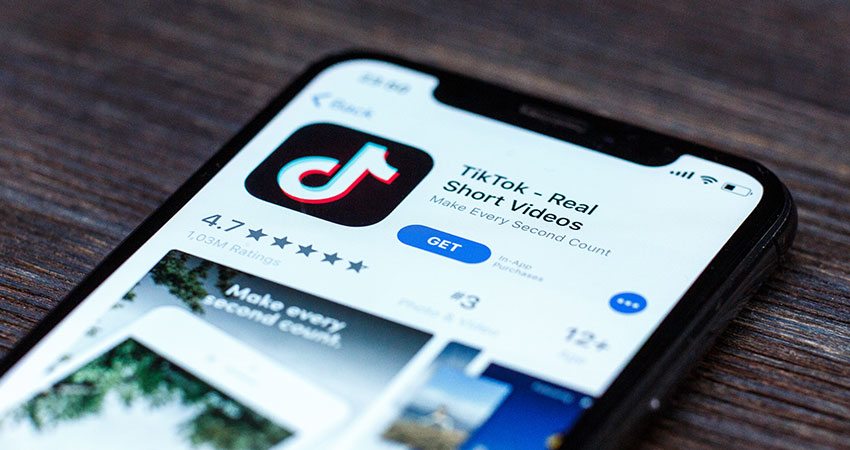A study sampling 5,000 DTC sellers in Q2 found ad spend on TikTok was up 53% from the previous quarter, as brands flock there based on lower costs relative to Facebook and Instagram, as well as the short-form video platform’s younger audience being their lifeblood for the future.
The study by ecommerce analytics tool provider Triple Whale found that while Facebook dwarfs TikTok in terms of total ad spend, the Chinese platform is growing while Facebook is reversing course. Ad spend on TikTok to date in 2022 across Triple Whale’s client base of 6,000 brands is at $77.3 million, more than 4x the $18.42 million for all of 2021. By comparison, Facebook’s YTD spend is $1.13 billion, against $1.64 billion for last year.
Alexa Kilroy, head of brand at Triple Whale, said the lower-cost CPMs — averaging $2 to $3 vs. about $11 for Facebook — and the younger, engaged audience are the main reasons TikTok is seeing such a massive shift in ad spend.
“We’re seeing a dramatic increase in spend on TikTok,” Kilroy said. “The platform is relatively new and self-service, and TikTok is still working to optimize it and features to enable it to be as big a paid platform as Facebook. TikTok has also gathered a mass of people who were previous Instagram users from Gen Z and millennials, and are now spending more time there. For brands targeting them, there’s a lot more opportunity to succeed.”
While there have been concerns expressed about TikTok’s use of data and allegations it is fed to the Chinese government, which the Trump administration sought to address without success, Kilroy said it’s much less of an issue for younger consumers.
“They seem less concerned about those privacy and China-related issues,” she said. “However, the app tracking transparency data policy changes from Apple apply to TikTok as much as to Facebook and other platforms, every time they’re downloaded.”
While TikTok is not immune to Apple’s privacy changes, requiring consumers to opt into app tracking on its iOS platform since the spring of 2021, the factors cited above make it the new go-to vehicle for advertisers.
Recent research from Bloomberg shows that Gen Z’s combined spending potential is over $360 billion in the U.S. By 2026, Insider Intelligence reports, millennials will surpass baby boomers as the largest consumer generation.
Kilroy noted how TikTok has been more innovative in some ways than other social platforms. For instance, it has been successful in its use of hashtags, which have not been a winner for advertisers on Facebook, Instagram and Twitter in recent years. Also, shoppable ads and live streamed commerce has failed to catch on here, with Meta ditching it on Facebook but keeping it in a limited fashion on Instagram. She called the amount of sales through Instagram’s shoppable features “grains of sand.”
TikTok, while pulling back from live shopping expansion in Europe and the U.S. after a poor initial showing, is moving forward with testing of its Shopping Ads suite that includes video shopping ads, catalog listing ads and live shopping ads. The potential for TikTok ecommerce, given all its moves and audience size and growth, is enormous.
“People still tag products in photos, but consumers are not shopping directly,” Kilroy said. “TikTok will have live shopping, QVC style, where you can directly purchase from the screen, and shoppable ads will allow you to push a button to purchase. They’re innovating and making the experience not only more engaging but creating a faster path to conversion. They have the potential to scale rapidly in the ad world, capturing the younger demographics.”
Some other statistics from the Triple Whale report:
- Clothing and health/beauty were the biggest ad spending categories among DTC brands, followed by home/garden and food/beverage, roughly a third of clothing
- Health/beauty had the highest average CPM on Facebook, at $15.68, among the 5,000 brands surveyed by Triple Whale, followed by digital products ($14.20), food/beverage ($12.41) and art ($12.23)
- DTC companies in the $1 million-$5 million range for annual sales, collectively as a group, are outpacing ad spend on TikTok by those in the $5 million-$10 million, $10 million-$25 million and $25 million-plus ranges.
- Companies north of $10 million in sales saw the greatest bang for the ad spend buck, as measured by Marketing Efficiency Ratio (MER), which looks at return on ad spend across all platforms.

